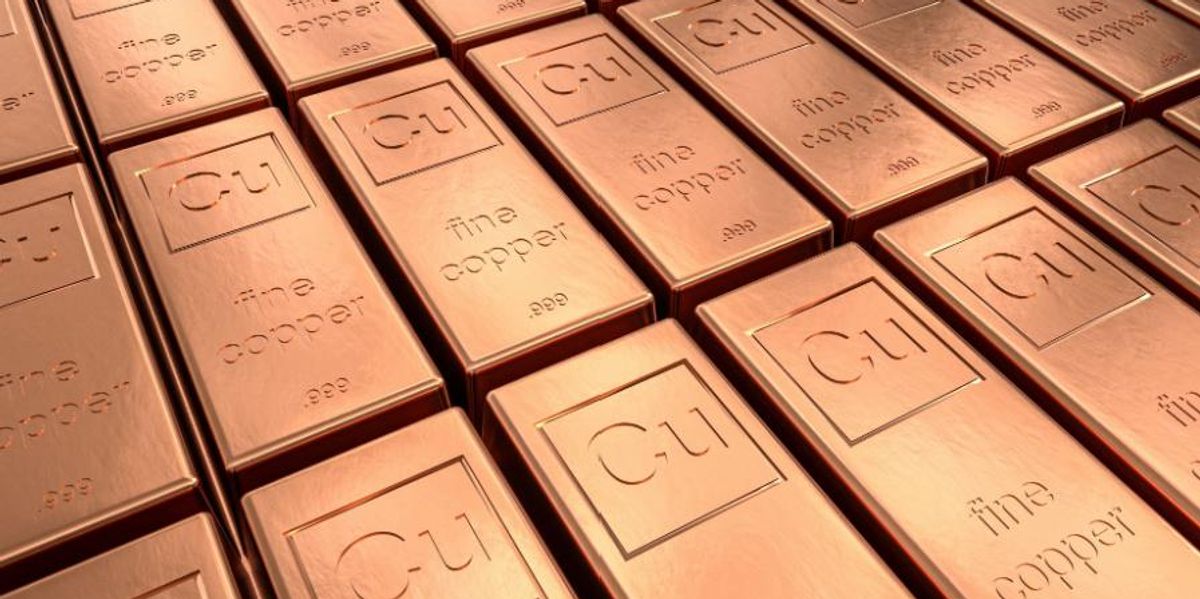Copper prices have been volatile since the beginning of the year.
After surpassing the US$10,000 per metric ton mark in the first quarter, prices have been unable to return to that level, pressured by global economic uncertainty related to inflation and weak demand from China. But the long-term picture for copper, which has high electrical conductivity, is still bright — the green energy transition is expected to see demand for the base metal increase.
Here the Investing News Network looks at five trends in the copper market that interested investors should be paying attention to.
1. Macroeconomic factors: Inflation, interest rates and China
As mentioned, volatility has been dominating the copper market in 2022, with factors like inflation, high interest rates and fresh COVID-19 restrictions in China putting a stop on the metal’s rally earlier this year.
US headline inflation is now running at its highest in about 40 years, Concord Resources Research Manager Duncan Hobbs said during a keynote presentation at this year’s Fastmarkets Copper Conference. “That means that nobody under the age of 60 in the workforce today has ever worked through a period of life with direct hands-on experience with dealing with hyperinflation — that has all sorts of implications for how people think about their businesses and planning for this,” he said.
Interest rates have also been on the rise around the world, led by the US Federal Reserve, with fears of an imminent recession hitting the outlook for metals including copper, which is primarily used in construction.
Another key macro trend that has been impacting the copper sector is China, as the Asian nation is the main consumer of the metal. Earlier this year, a new COVID-19 outbreak pushed the government to impose fresh containment measures, which slowed down the recovery in demand for metals.
2. The energy transition
As the world moves away from fossil fuels, the use of copper to electrify the world will become essential. Most analysts agree that the base metal is bound to be a winner of the green energy transition.
In fact, electric vehicles use three times more copper than internal combustion engine cars — add to that the use of copper in electric vehicle charging stations and energy storage systems, and the demand picture only keeps on growing.
“We have moved into a landscape of accelerated copper demand growth, underpinned by the green energy transition,” Piotr Ortonowski, senior market analyst at ERG, said at the event. “In 10 years’ time, 7.6 million to 11.3 million tonnes of new mine capacity will be required to fill the supply gap, but mining companies have been extremely sluggish in responding to this challenge — the recent drop in prices won’t help.”
Copper demand from green end-use sectors is set to more than double between 2020 and 2030.
3. Primary and secondary supply
As the use of copper rises, the need for recycled copper will also increase. About 30 percent of global copper use comes from recycled copper, according to the International Study Copper Group.
“But even under 100 percent efficient recycling this would only reduce by 25 percent the needs for mining as estimated by the World Bank,” Fernando Nuno, clean energy transition program manager at the International Copper Association, said during a keynote presentation. “To keep up with demand, copper needs to be extracted in a timely and sustainable manner, for which a number of challenges must be collectively addressed, including the acceptance of mining.”
4. The challenges of “green copper” supply
The world is undergoing an energy transition that will require mining, but not at any cost. Sustainability has become a core discussion for the industry, with the difficult-to-define concept of “green copper” being used more and more often.
“I don’t think there’s a clear definition of what green copper means,” Michael Hellemann Soerensen of Aurubis said. “For us, that contains four different elements: carbon, the environmental impact, the recycling part of the products we make and then there’s social responsibility, including business partner screening, human rights, etc.”
Transparency from companies claiming to be producing green copper is key, as are the metrics they use to measure progress.
“I think it’s worth noting how far we’ve come,” said Georgina Hallett, chief sustainability officer at the London Metal Exchange. “I think now we are committed to understand that even if it’s environmentally friendly at the cost of other ESG metrics, that’s not okay either. So it’s got to be a balance while not getting too broad.”
5. Underinvestment in copper projects
In the short term, there are a few copper projects expected to come on stream, with 2022 forecast to be well supplied. But with lower grades and not many new discoveries in the pipeline, the long-term supply picture for the base metal turns blurry.
Furthermore, the lack of investment in new copper projects could see the sector enter a period of shortage right at the time when the metal will be needed the most.
“Near term there is plenty of uncertainty, but longer term (the) requirement for new projects remains,” said Graeme Train, head of metals research at Trafigura. “But adding mining capacity is getting harder and more expensive.”
Don’t forget to follow us @INN_Resource for real-time updates!
Securities Disclosure: I, Priscila Barrera, hold no direct investment interest in any company mentioned in this article.
From Your Site Articles
Related Articles Around the Web
Image and article originally from investingnews.com. Read the original article here.

